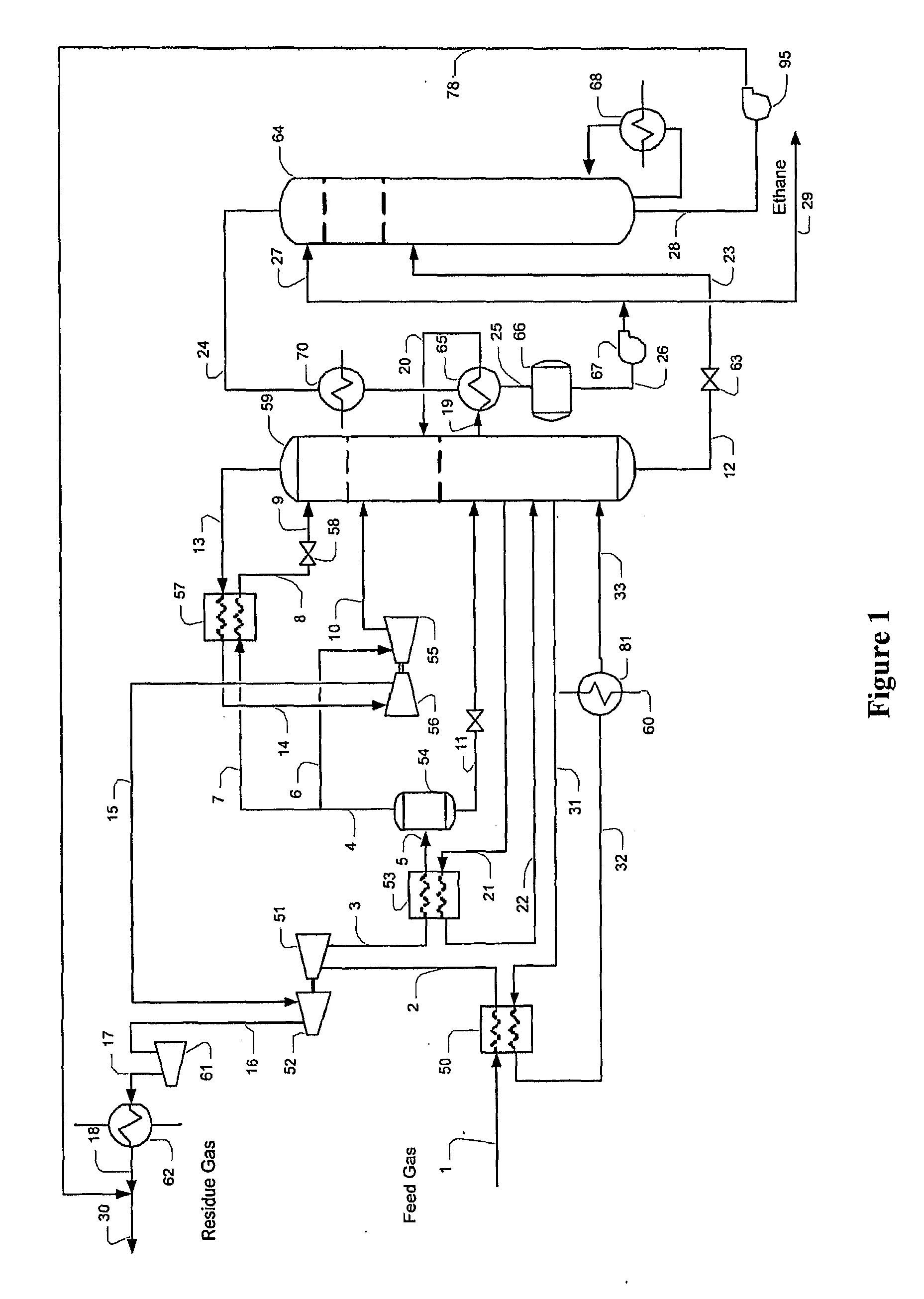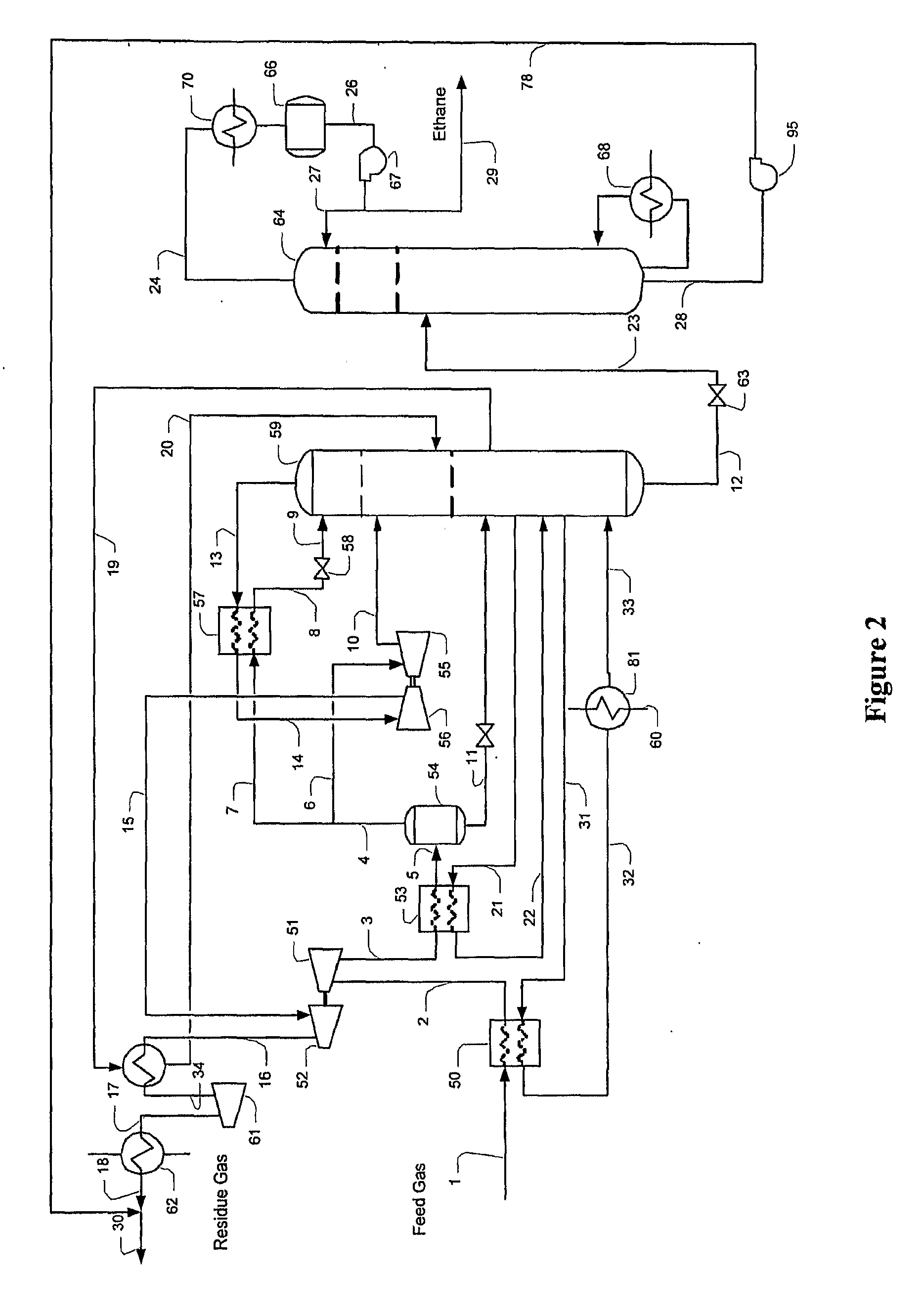Ethane Recovery Methods And Configurations
- Summary
- Abstract
- Description
- Claims
- Application Information
AI Technical Summary
Benefits of technology
Problems solved by technology
Method used
Image
Examples
Embodiment Construction
[0017]The inventor has discovered that various high pressure hydrocarbon feed gases (e.g. at least 1400 psig, and more preferably at least 1600 psig, and even higher) can be processed in configurations and methods that include two stages of turbo-expansion that will significantly contribute to the cooling requirements of a downstream demethanizer and deethanizer. The feed gas in preferred aspects comprises CO2 in an amount of at least 0.5 mol %, and more typically at least 1-2 mol %, and has a relatively low C3+ (i.e., C3 and higher) content that is typically equal or less than 3 mol %.
[0018]In most of contemplated configurations and methods, ethane recovery of at least 70% to 95% is achieved while refrigeration and energy requirements are dramatically reduced. Moreover, in especially preferred configurations and methods, the demethanizer reboiler duty is provided by the feed gas heat content, and expansion of the feed gas provides refrigeration content in the reflux and demethanize...
PUM
 Login to View More
Login to View More Abstract
Description
Claims
Application Information
 Login to View More
Login to View More - R&D
- Intellectual Property
- Life Sciences
- Materials
- Tech Scout
- Unparalleled Data Quality
- Higher Quality Content
- 60% Fewer Hallucinations
Browse by: Latest US Patents, China's latest patents, Technical Efficacy Thesaurus, Application Domain, Technology Topic, Popular Technical Reports.
© 2025 PatSnap. All rights reserved.Legal|Privacy policy|Modern Slavery Act Transparency Statement|Sitemap|About US| Contact US: help@patsnap.com



